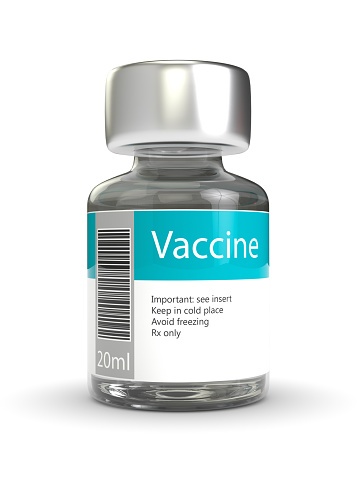 We live in a time where communicable disease epidemics are few and far between. We do not live in fear of getting polio, where paralysis of both the legs and lungs are inevitable. Nor do we have severe outbreaks of measles. Healthcare providers, and our nation’s population, have worked together to decrease and isolate outbreaks of highly contagious, deadly diseases over decades of diligence and development of preventative measures.
We live in a time where communicable disease epidemics are few and far between. We do not live in fear of getting polio, where paralysis of both the legs and lungs are inevitable. Nor do we have severe outbreaks of measles. Healthcare providers, and our nation’s population, have worked together to decrease and isolate outbreaks of highly contagious, deadly diseases over decades of diligence and development of preventative measures.
Vaccines are the lifesaving tool, you are the user who makes it happen. In case you’re anything like us, your curiosity and hunger for knowledge about this type of preventative medicine is strong, which is precisely why we decided to talk about some common vaccines, what they do, and why we receive them.
Hepatitis B
Hepatitis B, also known as HBV, is an infection that attacks the liver. It can cause sudden onset or recurring liver disease. What makes this virus so dangerous is its ability to survive outside the body for up to seven days, and that it’s transferred through bodily fluids. When we say bodily fluids, we mean something as simple as saliva or mucous, which are produced during a cough and spread into the air/surrounding objects. It can also be transferred from a mother to her child during birth.
What’s the big deal?
Well, your liver is responsible for many functions in your body. It synthesizes proteins your body needs, detoxes your blood, converts the sugars you eat into energy your body can use, stores vitamins and minerals for later use, and even makes angiotensinogen (a hormone your kidneys request to raise your blood pressure and improve renal filtration). That’s not a complete list of liver function, either.
According to Medical News Daily, your liver does somewhere around 500 different things for your body! When it malfunctions, it affects all of your other systems. It can impact your general health in a very serious way. Receiving the Hepatitis B vaccine protects you from a highly contagious infection that is notorious for disrupting your liver processes (all 500 of them). That is why you receive this particular vaccine.
When do you receive it?
The vaccine comes in three, sometimes four installments. The first is given at birth, the second and third are given between the first month and 15 months of age. If you’re thinking this seems awfully young to receive a vaccine, know this: according to the World Health Organization, 80-90% of infants who are infected with Hepatitis B in their first year of life will suffer chronic liver infections for the remainder of their life.
Polio
Polio, also known as Poliomyelitis attacks your spinal cord, destroying nerve cells and blocking communication from your brain to the rest of your body. Infants and pregnant women are most susceptible to this virus, and there is no cure. Complications of this disease include paralysis (sometimes permanent), difficulty breathing or total loss of ability to breathe, and pain in the limbs. Transmission is most common through feces, generally through the fecal-oral route. It can, however, also be transmitted through other bodily fluids in something as simple as sharing a glass of water.
What’s the big deal?
While the World Health Organization has made leaps and bounds in attempting to eradicate polio from our world, it still exists. Thanks to our nation’s vaccination programs, the last known case of naturally occurring polio in the U.S. dates back to 1979. The vaccine is so effective, 99 out of 100 children who complete their vaccination schedule for polio are protected from it. That’s why we use this vaccine.
When do you receive it?
The first dose is given at two months of age, with the subsequent second and third doses given between the 4th month and 15 months of age.
MMR (Measles, Mumps, Rubella)
 Measles
Measles
Measles is a disease spread through the air when a person coughs or sneezes. It’s so contagious, if a person has it, 9 out of 10 people around them will become infected if they aren’t vaccinated.
According to the CDC, one out of every four people in the U.S. who contract measles will be hospitalized. One out of every one thousand people with measles will have encephalitis (swelling of the brain). Due to the vaccination program in the United States, measles was labeled as eliminated from our nation. However, this does not actually mean entirely eliminated. It simply means there is no longer a constant presence of the disease. It can still make its way here via travelers who aren’t vaccinated.
Mumps
Mumps is a disease that attacks the salivary glands, located under your tongue and in front of your ears. It can cause extreme swelling of these glands, and even hearing loss (though the latter is less common). Other complications include swelling of the brain, pancreas, and meningitis. It’s very contagious and there’s no cure, but there is a vaccine! Mumps is still present in the United States, hence why taking preventative measures is extremely important.
Rubella
Also known as the German Measles, Rubella is a viral infection that poses the greatest risk to pregnant women. If a pregnant woman contracts Rubella, the fetus is at risk for congenital defects and in some cases, death.
What’s the big deal?
These three viruses are highly contagious, and target children. In some cases, children can bounce back fairly well. In others, the effects are seen throughout their lives. Because these are viruses, there is no simple antibiotic treatment they can receive. The best defense is a good offense. That is why we vaccinate for MMR.
When do you receive it?
This vaccine comes in two installments. The first is given between 12 and 15 months, the second administered between 4 and 6 years of age.
DTaP (Diphtheria, Tetanus, and Pertussis)
Diphtheria
Diphtheria is a bacterial infection that affects your respiratory system. The bacteria binds to your tissue, and begins releasing toxins that kill the tissue. The end state is a thick coating of dead tissue mucus, bacteria, and toxins in your nose and throat making it difficult to swallow and breathe.
It’s spread through something as simple as coughing. There’s treatment available because it’s a bacteria. Antibiotics and antitoxin medication are administered, and the patient is kept in isolation until they are no longer contagious.
Tetanus
Tetanus is an infection from bacteria called Clostridium tetani. It can be found almost anywhere as spores (even dust and soil), and grows into bacteria once it finds a home in your body. It enters your body through a break in your skin like a small cut, a puncture, or a hangnail that broke skin.
Cramping in the jaw (aka lock jaw) is often the first symptom of tetanus. Other symptoms include muscle spasms, seizures, painful muscle stiffness, and changes in blood pressure.
There’s a specific antibiotic for tetanus, as this particular infection is dangerous. It requires immediate hospital care, efficient and thorough wound care from the entry point, close monitoring for dangerous complications like pulmonary embolisms, and additional antibiotics.
Pertussis
Pertussis is better known as Whooping Cough. It’s caused by the bacteria Bordatella pertussis, and it attacks the respiratory system. It’s called Whooping Cough because the affected person will have coughing spells so strong and violent they are gasping for air, making a whooping sound.
It’s highly contagious, and spread through saliva droplets in the air that are expelled during coughing. There’s limited treatment, and it’s effective primarily in the beginning stages before the coughing begins. Once the coughing begins, antibiotics can kill the bacteria but there’s already damage done to your respiratory system.
What’s the big deal?
All three of these bacteria have damaging results on the body, particularly to infants and children. They also don’t discriminate, meaning anyone is susceptible to them. Once the infection begins, it can be difficult to diagnose early, which allows more time for permanent damage and/or serious complications to take place. This is why we use the DTaP vaccine.
When do you receive it?
The DTaP vaccine is administered in four installments. The first is given at 2 months old, the next 3 are administered all the way through 15 months of age. A booster is recommended every 10 years, even for adults.
This information is not meant to scare you into getting a vaccination. In fact, these vaccinations are a requirement in many states to attend school, day care, play sports, etc. Our intention is to show you why they are relevant, important, and critical to our health and the health of our children.
If you’d like to explore some more resources on vaccinations and the recommended time-frames for receiving them, check out the CDC’s Immunization Schedule. It covers 0 months to 18 years old, and lists what vaccines are recommended for what age range.
If you’re in need of a vaccination visit us at our Medical Specialty Center—Your Everyday Health Care Clinic. We will take care of you quickly and efficiently. Appointments are recommended, but walk-ins are welcome. Open 7 days a week. It’s our goal to have fast and friendly care while delivering quality health care.
Our mission at Orchard Hospital is to provide our community with superior healthcare. We strive to ensure that your experience at Orchard Hospital is as pleasant and comfortable as possible. Our priority is to provide you with the care you need when you need it, with skill, compassion, and respect.



